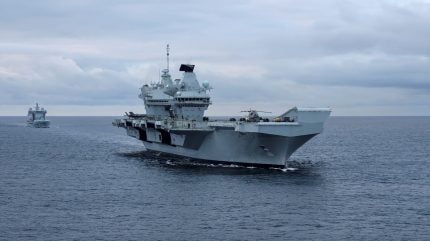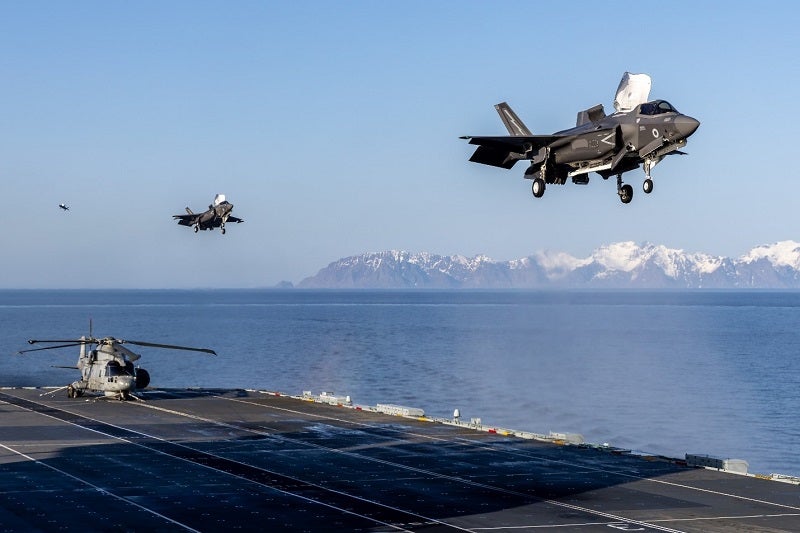
The Tactical Air Navigation (TACAN) and Direction Finder (DF) systems on board the Royal Navy’s two Queen Elizabeth-class aircraft carriers (QEC) face obsolescence, according to a UK Government notification to industry.
According to the notice detailing the future open opportunity, the government will formally approach bidders in November 2024.
The contract is anticipated to begin the following year with the work due to end on 31 October 2028. The value of the contract is expected to be between £8m-£10m ($10m-$12.6m).
The current TACAN and DF systems are key components of the Ship Air Interface equipment. This area of responsibility lies with the Military Aviation Authority as the systems are classified as air traffic management equipment.
TACAN acts as a beacon providing aircraft with information on relative bearing and distance to the ship while DF gives air traffic controllers information on the bearing of aircraft from the ship based upon their radio transmissions.
At present, the capability is facing obsolescence challenges and replacement systems are sought for deployment from 1 November 2025, the government explained in their statement.
How well do you really know your competitors?
Access the most comprehensive Company Profiles on the market, powered by GlobalData. Save hours of research. Gain competitive edge.

Thank you!
Your download email will arrive shortly
Not ready to buy yet? Download a free sample
We are confident about the unique quality of our Company Profiles. However, we want you to make the most beneficial decision for your business, so we offer a free sample that you can download by submitting the below form
By GlobalDataA ‘statement of requirement’ has been developed and agreed upon with Navy Command stakeholders defining the scope of support required to achieve the required levels of availability and provide the necessary specialist advice and support to meet legislative, regulatory and safety requirements.
QEC Ship Air Interface
There are two Royal Navy carriers: HMS Queen Elizabeth and HMS Prince of Wales, both of which are the largest warships ever constructed in the UK.
They displace 65,000t, a size between the US 100,000t Nimitz class and the French 43,000t Charles de Gaulle class aircraft carriers, and three times larger than its 20,000t Invincible-class predecessor.
The carrier will support joint combat aircraft, carrying out up to 420 sorties over five days and will be able to conduct day and night-time operations. The maximum sortie rate is 110 joint combat aircraft sorties in 24 hours.
The standard air group of 40 aircraft includes 36 Lockheed Martin F-35B joint strike fighters and four EH101 Merlin helicopters. It can also include other maritime surveillance and control aircraft.

The maximum launch rate is 24 aircraft in 15 minutes and the maximum recovery rate is 24 aircraft in 24 minutes.
In 2018, the UK Ministry of Defence suggested that the newly developed rolling vertical landing procedure allows the recovery of an F-35 while still carrying a full payload.
At the time, these landings had not been conducted on a maritime platform, making the QEC carriers the first class of ship to recover an F-35 in this manner.
The government added that there would be alterations to the Thermal Metallic Spray that protects the deck from aircraft efflux during take-off and landing, as well as navigational interfaces for the ship and the aircraft.






